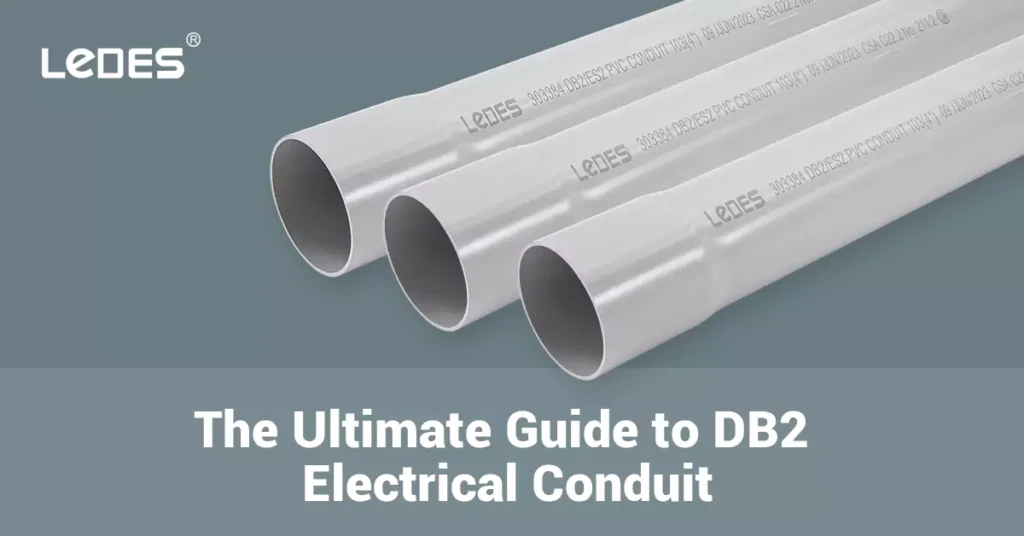
目录
What is DB conduit?
DB conduit, also known as Direct Burial conduit, is a type of piping specifically designed for protecting and routing electrical cables and wires underground. It’s a crucial component in various construction and utility projects, it serves as a protective pathway or sleeve for routing electrical wires and cables below the ground surface. DB utility duct is constructed using materials that provide durability and resistance to environmental factors, moisture, and physical damage.
DB conduit is typically made from rigid polyvinyl chloride (PVC) and comes in various diameters and wall thicknesses. The “DB” in the name stands for “direct burial,” indicating its suitability for installation underground without requiring additional concrete encasement. This makes it a cost-effective and versatile option for various underground electrical applications.
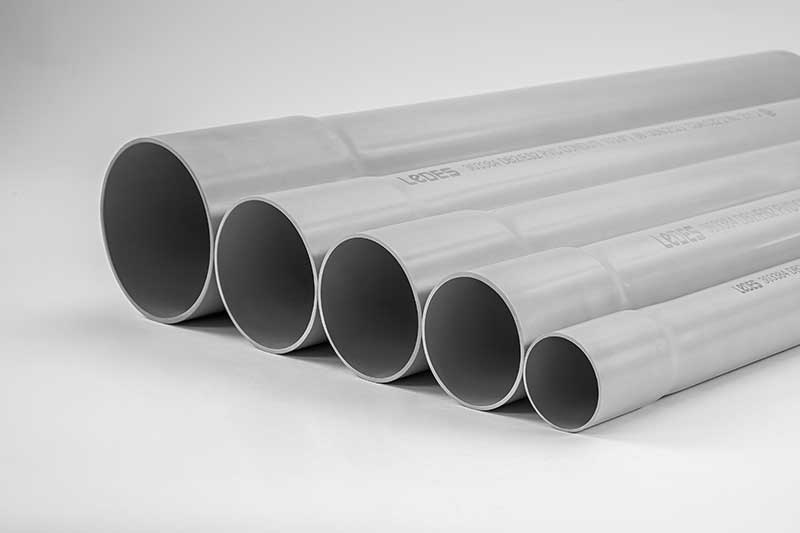
Types of DB conduit
There are several types of DB conduit available, each with its own specifications and advantages. Here are some of the most common ones:
DB60 Utility Duct:
DB60 utility duct is a type of conduit specifically engineered to accommodate cables and wires in telecommunications and data networking applications. The “DB60” designation refers to its dimensions, with a standard size of 60mm in both height and width. However, it’s important to note that other sizes and variations may be available to suit specific installation requirements.
优点:
- Effortless Installation: Say goodbye to heavy concrete encasement. DB60’s direct burial capability saves you time and money, making installation a breeze.
- Superior Strength: DB60 is built to handle the pressure of underground soil and the stresses of movement, ensuring your cables stay secure.
- Cost-Effective Choice: Compared to traditional metal conduits, DB60 offers significant cost savings thanks to its ease of installation and lighter weight.
Required Burial Depth:
general guideline for minimum burial depths based on conduit type and location (refer to the National Electrical Code (NEC) and other industry standards for specific requirements):
- Residential areas: 18 inches(45cm)
- Commercial and industrial areas: 24 inches(60cm)
- Road crossings: 36 inches(90cm)
Industry Standard:
DB60 utility duct isn’t just built to last; it’s built to the highest standards. It adheres to stringent industry regulations like NEMA TC-6 and TC-8 for utility duct and ASTM F-512, ensuring your project meets all necessary safety and performance requirements.
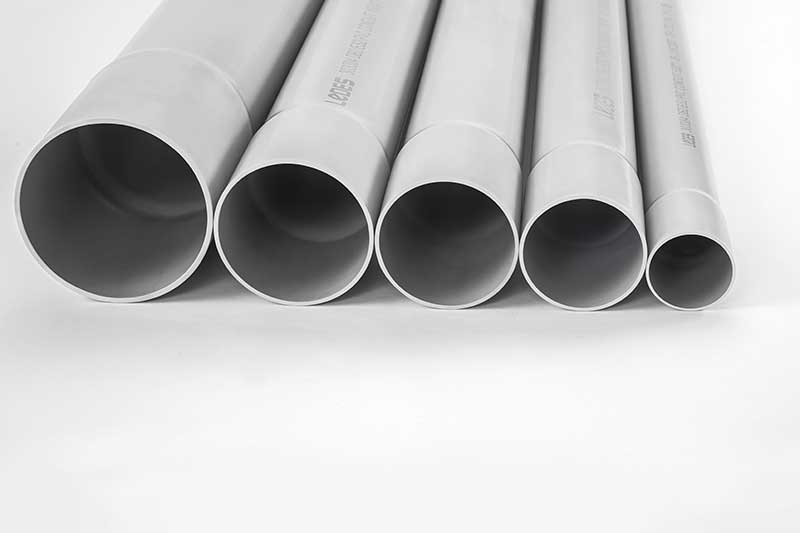
DB120 Conduit
What is DB120 Conduit?
DB120 conduit is a type of electrical conduit that is widely used for protecting and organizing electrical wires and cables. It is made from high-quality, durable materials such as polyvinyl chloride (PVC) or polyethylene (PE), which provide excellent resistance against corrosion, moisture, chemicals, and UV rays. The “DB120” designation refers to the specific schedule rating of the PVC, which indicates its wall thickness and strength.
优点:
- Durability: DB120 conduit is resistant to corrosion, chemicals, and weathering, making it ideal for long-term underground use.
- Impact resistance: The thick walls of DB120 conduit can withstand significant impact, protecting the wires inside from damage.
- Lightweight: Compared to concrete or metal conduit, DB120 is much lighter, making it easier to handle and install.
- Flexibility: DB120 conduit is available in a variety of lengths and diameters, making it easy to adapt to different project needs.
- Cost-effective: DB120 conduit is a relatively affordable option compared to other types of underground conduit.
Required Burial Depth:
- Residential areas: 12 inches (30 cm)
- Commercial and industrial areas: 18 inches (45 cm)
- Road crossings: 36 inches (90 cm)
Standards for DB120 Conduit:
DB120 conduit must meet several industry standards to ensure its quality and safety. These standards include:
ASTM F-512: Standard Specification for Smooth Wall Polyvinyl Chloride (PVC) Conduit, Conduit Fittings, and Bell End Inserts
NEMA TC-6: Polyvinyl Chloride (PVC) Conduit and Fittings for Underground Use
NEMA TC-8: Nonmetallic Underground Utility Duct
Installation:
Installing DB120 conduit is a relatively straightforward process. Here are the basic steps:
- Excavate a trench: The trench should be deep enough to meet the local burial depth requirements for electrical and communication lines.
- Lay the conduit: Place the conduit in the trench, ensuring it is level and free of debris.
- Join the conduit sections: Use solvent cement or mechanical couplings to join the conduit sections together.
- Pull the wires: Pull the electrical or communication wires through the conduit.
- Backfill the trench: Backfill the trench with earth, tamping it down to eliminate air pockets.
应用:
DB120 conduit is used in a wide variety of applications, including:
- Residential and commercial underground electrical wiring
- Traffic signal and street lighting systems
- Telecommunication and data cables
Type EB20/35 Conduit
What are Type EB20/35 Conduit?
Crafted from sturdy PVC (polyvinyl chloride), these conduits are specifically designed for burial encased in concrete. This means they become an integral part of the underground infrastructure, shielding sensitive electrical cables from the harsh realities of buried life.
优点:
- Exceptional Strength: The “EB” designation signifies their exceptional impact resistance, able to withstand the pressures of shifting soil and accidental impacts. Think of them as silent guardians, keeping your electrical currents flowing uninterrupted.
- Superior Durability: Encased in concrete, these conduits form a robust and stable network, minimizing the risk of damage from ground movement and ensuring long-lasting performance.
- Lightweight: Compared to their metal counterparts, EB20/35 conduits are featherweights, making them easier to handle and install, saving time and labor costs.
- Compatibility: Available in a range of diameters and lengths, these conduits can be tailored to diverse project needs, from small residential installations to sprawling commercial complexes.
标准:
To ensure their quality and safety, EB20/35 conduits must adhere to strict industry standards ASTM F-512, NEMA TC-6.
Installation:
Installing EB20/35 conduit follows a straightforward process:
- Trench Warfare: Dig a trench deep enough to meet local burial depth requirements, providing ample protection for the electrical arteries within.
- Concrete Cradle: Prepare a bed of sturdy concrete to serve as a supportive and protective encasement for the conduit.
- Laying the Foundation: Carefully place the conduit sections in the trench, ensuring proper alignment and connection.
- Joining Forces: Use solvent cement or mechanical couplings to create a seamless and leak-proof conduit network.
- Concrete Cloak: Cover the conduit with the prepared concrete, creating a unified and impenetrable shield.
DB2/ES2 PVC Duct
What is DB2/ES2 PVC Duct?
DB2/ES2 duct, is a rigid polyvinyl chloride (PVC) pipe specifically designed for direct burial and concrete encased applications.
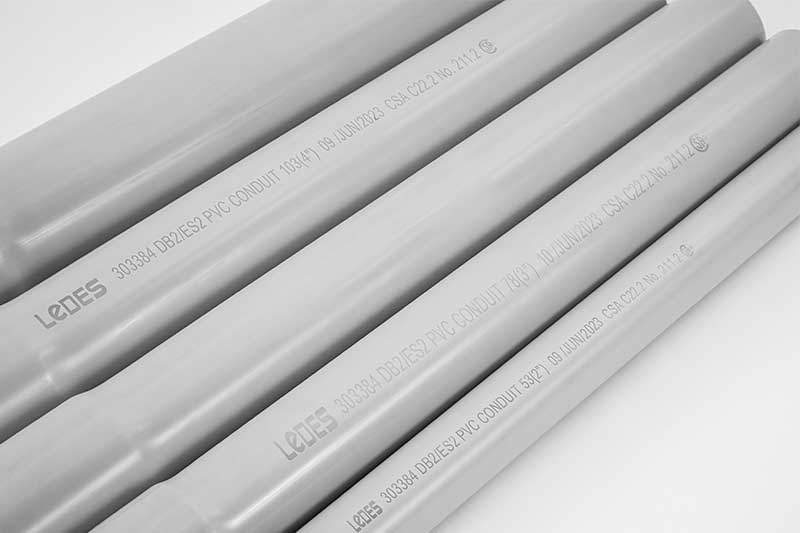
优点:
- Corrosion resistant: DB2/ES2 PVC duct made of high PVC material, its non-metallic, even exposed to naturally corrosive conditions, it won’t rust. Ensuring long-term performance in the underground world, providing safe and reliable protection for wiring systems.
- Lightweight: Its lightweight, making handling and installation easier and greatly saving time and labor costs.
- Direct burial: Its for direct burial applications and requires no additional protection when installed according to the Canadian Electrical Code(CEC).
- Easy wire pulls: DB2/ES2 has smooth interior surface reduces friction when pulling wires and cables through long runs.
标准:
CSA C22.2 No.211.1 (Canada): This crucial standard applies to rigid PVC conduit used for underground electrical installations in Canada, guaranteeing compliance with local regulations and safety requirements.
Performance required by CSA C22.2 No.211.1:
- Impact resistance: It provides high impact resistant even in cold weather. CSA C22.2 No.211.1 require the duct pass the impact test at -18℃ show no cracking or splitting on the inside or outside of the conduit。
- Crush resistance: The standard requires the percentage decrease in diameter shall not exceed 10% on DB2/ES2 under load and not exceed 5% after recovery.
- Stiffness: The standard requires the conduit shall have a minimum pipe stiffness of 300 kPa at 5% deflection.
切割和连接:
DB2/ES2 PVC duct can be cut easily with a hacksaw, or use a PVC cutter for small sizes.
To join the lengths of duct or fittings, solvent cement is all that needed. PVC Solvent cement can make the joints strong and leak-proof. Easy handling and saving time.
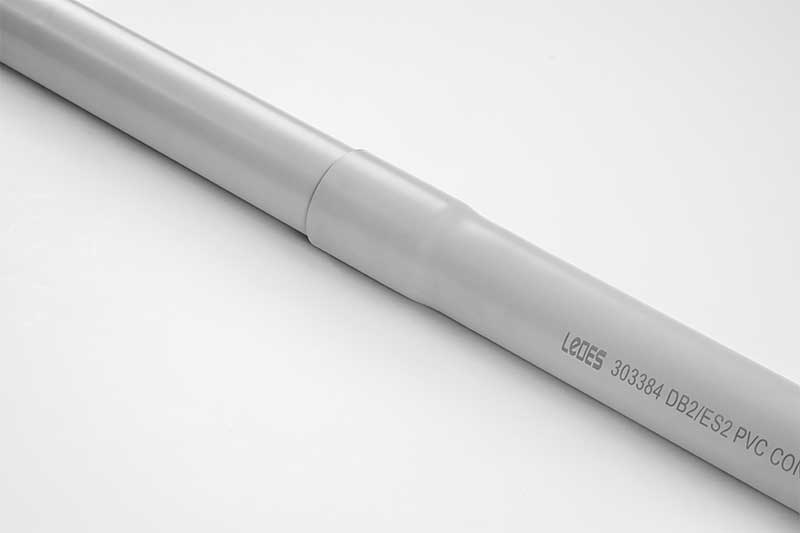
Installation:
- Trench Bottom: Dig a trench deep enough to meet local burial depth requirements, protecting the electrical lines within.
- Laying the Foundation: Carefully place DB2 duct sections in the trench, ensuring proper alignment and connection using solvent cement or mechanical couplings.
- Backfill: Once the conduit is secure, backfill the trench with earth, ensuring proper compaction to eliminate air pockets.
Questions you may have:
Which duct is right for my project?
Choosing the right duct depends on your specific needs:
- For underground installations without concrete encasement: Choose DB120 for its superior strength and durability.
- For above-ground or concrete-encased installations: DB2 is a cost-effective option for protecting wiring in walls, ceilings, and exposed conduit runs.
- For high-traffic areas or applications requiring extra protection: Consider DB120 even for above-ground installations due to its robust construction.
Are there any additional factors to consider?
- Local building codes: Always check and adhere to local regulations regarding the type and installation of electrical conduits.
- Temperature limitations: Both ducts have recommended temperature ranges, so ensure your application falls within those limits.
- Future expansion needs: If you anticipate future expansion of your electrical system, choose a duct size that can accommodate additional wiring.
Remember: Consulting with a qualified electrician or contractor is always recommended for specific project guidance and ensuring safe and compliant installations.
接触
If you have any questions, feel free to submit the contact form here 或者 email us today.



